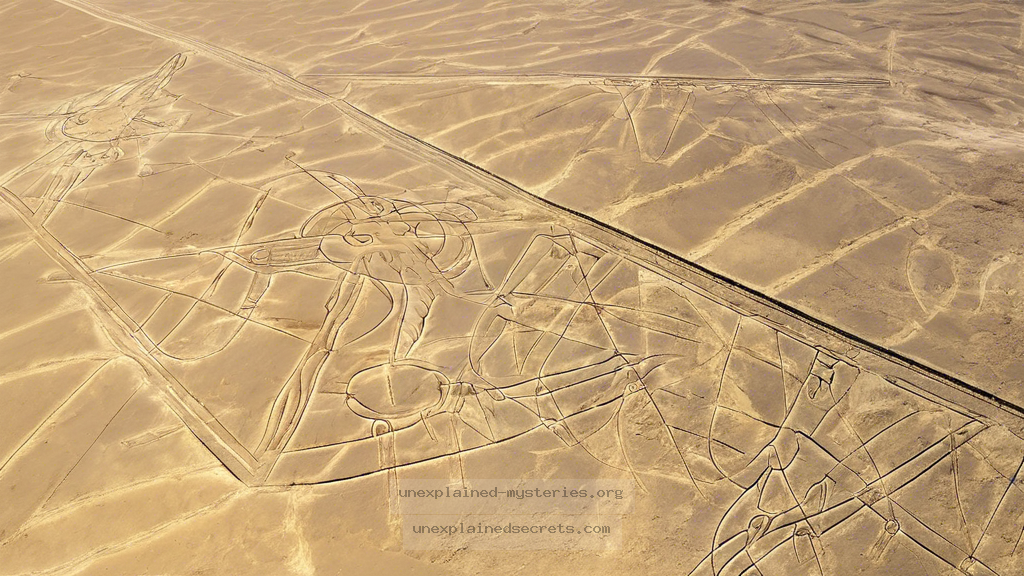What Secrets Do the Nazca Lines Hold About Ancient Civilizations?
What Secrets Do the Nazca Lines Hold About Ancient Civilizations?
The Nazca Lines, a series of large geoglyphs etched into the desert floor of southern Peru, have long fascinated archaeologists, historians, and conspiracy theorists alike. Spanning an area of over 1,000 square kilometers, these ancient etchings depict various figures, including animals, plants, and geometric shapes. The question of their purpose and the civilization behind them remains one of the most perplexing mysteries in archaeology. Understanding the Nazca Lines is crucial not only for appreciating the ingenuity of ancient cultures but also for examining how we interpret and value ancient artifacts in the modern world.
Historical Context of the Nazca Lines
The Nazca Lines were created by the Nazca culture between 500 BCE and 500 CE, a period characterized by advanced agricultural practices and the development of extensive irrigation systems. The Nazca civilization thrived in an arid environment, and their ability to manipulate their landscape showcases a significant understanding of their surroundings. These geoglyphs were first discovered in the 1920s when the advent of commercial flight allowed for aerial observation of the lines.
The lines consist of shallow engravings, some up to 1,200 feet in length. The largest figures include a hummingbird, a monkey, and a spider, each meticulously crafted to be viewed from above. Scholars initially debated the lines’ purpose, with theories ranging from astronomical calendars to religious pathways, but no consensus has been reached. This uncertainty adds an additional layer of intrigue to the already mysterious Nazca Lines.
Core Concepts and Theories Surrounding the Nazca Lines
Several theories have emerged regarding the purpose and meaning behind the Nazca Lines. These can be broadly categorized into three main concepts: astronomical alignments, religious significance, and social cohesion.
- Astronomical Alignments: Some researchers propose that the lines served as an astronomical calendar, aligning with celestial bodies such as the sun and moon. This theory suggests that the Nazca people used the lines to mark solstices and equinoxes, aiding agricultural planning.
- Religious Significance: Another theory posits that the lines were created for religious or ritualistic purposes, serving as offerings to deities or as pathways for ceremonial processions. The large-scale figures could have been intended to please the gods and ensure crop fertility.
- Social Cohesion: A more contemporary perspective suggests that the lines were a means of fostering social cohesion among the Nazca people, serving as communal projects that reinforced cultural identity and unity.
Evidence Supporting the Theories
While the theories surrounding the Nazca Lines are compelling, evidence supporting them varies in strength. Astronomical alignments have been supported by studies showing that many of the lines point towards significant solar and lunar events. However, critics argue that correlation does not imply causation, and the lines need not be specifically designed for this purpose.
In terms of religious significance, archaeological excavations in the region have uncovered artifacts such as pottery and offerings that suggest a culture rich in ritual practices. Yet, the direct connection between these artifacts and the lines themselves remains elusive.
As for social cohesion, some researchers have pointed to the communal labor required to create these massive geoglyphs as evidence of a shared cultural identity. However, the lack of written records from the Nazca civilization means that much of this remains speculative.
Alternative Perspectives and Controversies
As with many ancient mysteries, the Nazca Lines are not without controversy. Some alternative theories have emerged that challenge mainstream archaeological interpretations. For instance, some conspiracy theorists suggest that the lines were created by extraterrestrial beings, arguing that their complexity and scale could not have been achieved by ancient humans. This perspective, while popular in certain circles, lacks credible evidence and is often dismissed by scholars.
Additionally, the lines’ preservation is a topic of concern. Environmental changes and human activities have threatened the integrity of the geoglyphs. Some scholars argue that the lines may be more fragile than previously thought, calling into question the long-term viability of the current preservation efforts.
Common Misconceptions About the Nazca Lines
Despite extensive research, several misconceptions about the Nazca Lines persist. One common belief is that the lines were designed for visibility from the ground. In reality, their scale and design suggest they were intended for view from the air, which aligns with the idea that they served a ceremonial purpose or were part of a larger cultural framework.
Another misconception is that the lines were created overnight or in a short period. In fact, the process of creating these geoglyphs would have required significant time, labor, and communal effort, indicating a highly organized society capable of mobilizing its resources effectively.
Best Practices for Investigating Ancient Mysteries
Investigating ancient mysteries like the Nazca Lines requires a multidisciplinary approach, incorporating archaeology, anthropology, history, and even technology. Here are some best practices for researchers:
- Multidisciplinary Collaboration: Engage experts from various fields to gain a more comprehensive understanding of the context.
- Use of Technology: Employ modern technology, such as drones and remote sensing, to gather data that may not be accessible through traditional methods.
- Preservation Efforts: Prioritize the conservation of sites to ensure they can be studied by future generations.
- Community Involvement: Involve local communities in research to foster respect and collaboration.
Future Developments and Ongoing Research
Research on the Nazca Lines is ongoing, with new technologies providing fresh insights. For example, recent studies using LiDAR (Light Detection and Ranging) technology have revealed previously unknown geoglyphs, suggesting that the Nazca Lines may be part of a more extensive network of ancient artworks.
Additionally, researchers are increasingly focused on the environmental impacts of climate change on these ancient artifacts. Efforts are being made to develop conservation strategies that can mitigate damage from both natural and human-induced factors.
Conclusion: The Enduring Mystery of the Nazca Lines
The Nazca Lines remain one of the most captivating enigmas of ancient civilizations. Their purpose, whether astronomical, religious, or social, offers a glimpse into the sophisticated understanding and beliefs of the Nazca people. While much remains uncertain, ongoing research and technological advancements may eventually shed more light on these remarkable geoglyphs. As we continue to explore and protect these ancient wonders, we not only preserve a vital piece of human history but also enrich our understanding of the diverse ways in which ancient cultures interacted with their environment and expressed their beliefs.
Other Articles
Recent Posts
- What Happened to Flight MH370? The Conspiracy Theories That Still Haunt Us
- What Secrets Lurk Within the Walls of the Infamous Trans-Allegheny Lunatic Asylum?
- What Evidence Supports the Existence of Bigfoot in the Pacific Northwest?
- What Happened to the Indus Valley Civilization? Unraveling the Mysteries of Ancient Urban Life
- Can Telepathy Be Scientifically Proven Through Laboratory Evidence?







